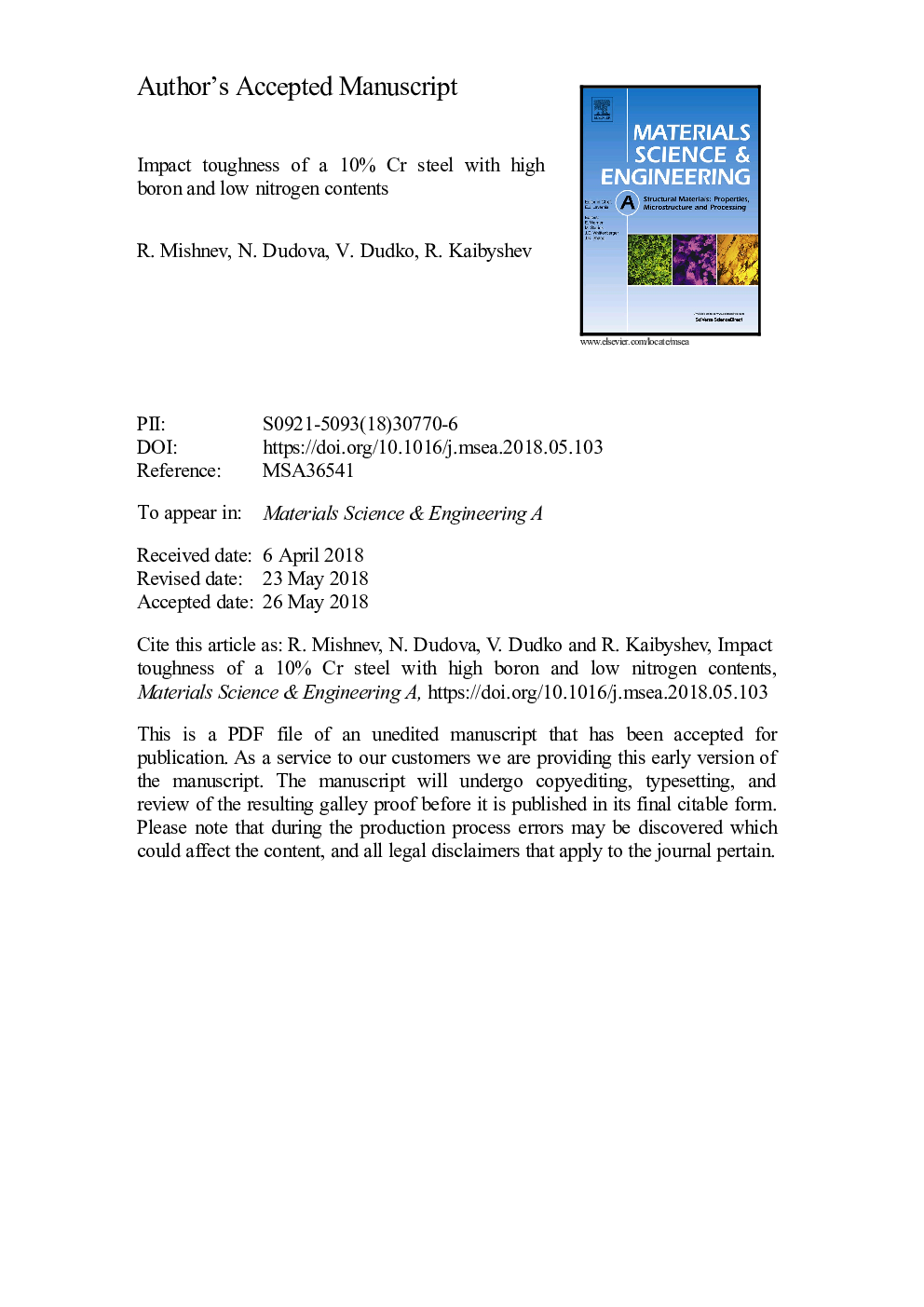| Article ID | Journal | Published Year | Pages | File Type |
|---|---|---|---|---|
| 7971719 | Materials Science and Engineering: A | 2018 | 28 Pages |
Abstract
The effect of temperature on the impact toughness and fracture behavior of a 10% Cr-2% W-0.7% Mo-3% Co-0.05% Nb-0.2% V-0.008% B-0.003% N (all in wt%) steel was studied. The ductile-brittle transition (DBT) occurs at 10â¯Â°C. At the DBT temperature (DBTT), the onset of unstable crack propagation occurs at the maximum load. The embrittlement is attributed to the onset of unstable crack propagation at stresses below the general yielding. A decrease in nitrogen content and an increase in boron content lead to the formation of chains of closely spaced M23C6 carbides at lath boundaries. The formation of numerous voids at carbide-matrix boundaries results in the appearance of crack with critical dimension after stable crack propagation over a very short distance. As a result, the energy of the stable crack propagation is low and the embrittlement takes place at relatively high temperature.
Related Topics
Physical Sciences and Engineering
Materials Science
Materials Science (General)
Authors
R. Mishnev, N. Dudova, V. Dudko, R. Kaibyshev,
